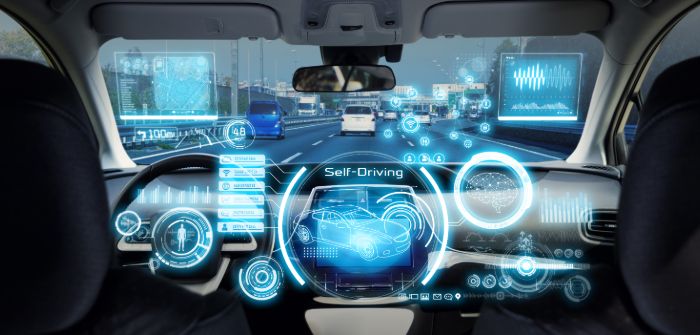A combination of technologies offers the best way to address the issues surrounding autonomous driving in the dark, says Phil Brown, a contributor to the 2025 AD online forum.
We’ve all been there. The sun has set, headlights are slowly flicking on, and the roads grow dark. Suddenly, a shape appears, causing a moment of mild panic and a jerk on the steering wheel. You’ve probably gotten away with this kind of maneuver many times during the day without thinking about it, but driving is more daunting – and more dangerous – at night.
The figures hold this up. In the USA and EU, 40-45% of fatal crashes happen in the dark, despite there being 60% less traffic on the road in some cases.
Thanks to reduced visibility, the way we see the road ahead changes completely when it’s dark. Add to the mix drivers who could be more tired, potential adverse weather conditions and a higher chance of drivers under the influence of drugs or alcohol, and it becomes clear why you’re statistically more likely to have a crash at night.
Humans are to blame
Sadly, the increase in car accidents at night is largely down to our inability to function as well at night.
Human eyes aren’t built for night-time activity, and our brains are hard-wired in the same way; when the sun is gone, it’s time to stop concentrating and switch off until it rises. This chemical shut down is one of the leading causes of falling asleep at the wheel – something which 17% of drivers in the EU admitted to having experienced at least once before.
Then there’s our inability to deal with sudden changes in light sources. If you’ve driven past a car with their headlights on full beam, you’ll notice that it takes your eyes a little while to adjust back to normal. For 15-year-olds, this takes about a second, but when you reach 65, it can take as long as nine seconds. That’s a long time to go with an inaccurate picture of the road ahead.
Even though we’re easily the leading cause of vehicle accidents in the dark, it’s not practical to simply stop driving at night. Luckily, there may be a solution to significantly reducing road fatalities, both at night and during the day.
Driverless cars in the dark
Vehicular autonomy is becoming more and more prevalent. We have electric cars capable of taking the wheel and comfortably navigating from A to B on highways at any time of the day, and autonomous public transportation is already appearing on public roads.
Although partly automated vehicles can be bought in many markets right now, the actual level of automation they offer remains limited. This means that drivers still need to constantly monitor the drive and must be ready to resume control immediately. On some models, night driving is still a hard no, with the car forcing the driver to take manual control if the light dips below a certain level.
However, instead of relying on just a camera or radar, driverless vehicles are deploying integrated state-of-the-art system technology to improve the capabilities of autonomous vehicles when driven at night.
Many autonomous vehicle developers and manufacturers are also turning to lidar, a laser-based radar system that sends pulses of light in front of the car. An onboard computer then builds a much more accurate picture of the road ahead in a split second, even without any light sources. Ford has recently trialled this technology, showing that safer autonomous driving at night is a serious focus for the major manufacturers working toward fully self-driven vehicles. Technology company Continental has also developed a high-res 3D lidar, described as ‘the future of machine vision’ for a range of uses, including for mining.
The beauty of lidar
The beauty of using lidar as an addition to a 2D camera and a radar or even the human eye is the system’s ability to see further than both, even in pitch blackness. The system can see pretty much anything up to 250m (820ft) ahead of the vehicle, which outperforms the human eye quite considerably. There’s also the fact that the system can spot, calculate and make a critical decision in time measured in thousandths of a second, whereas a tired brain could make the decision to swerve around an obstacle when it’s too late. Furthermore, lidar sensors don’t need to close their eyelids every four to six seconds – and we all know that road accidents frequently happen in the blink of an eye.
Autonomous vehicles – Better than us?
The key takeaway from driverless cars operating at night goes way beyond the practical implications and safety concerns that still need to be navigated. In reality, AI doesn’t get tired, doesn’t mistake a parked car for a patch of empty road and can make split-second decisions infinitely faster than a tired brain thinking about what’s for dinner.
With technology catching up with, and in many cases outstripping, human capabilities when it comes to driving in the dark, it’s high time we put our faith in driverless vehicles. For our own sakes.
The original, longer, version of this article, Prince of Darkness: Autonomous vehicles at night appeared on 2025 AD.


